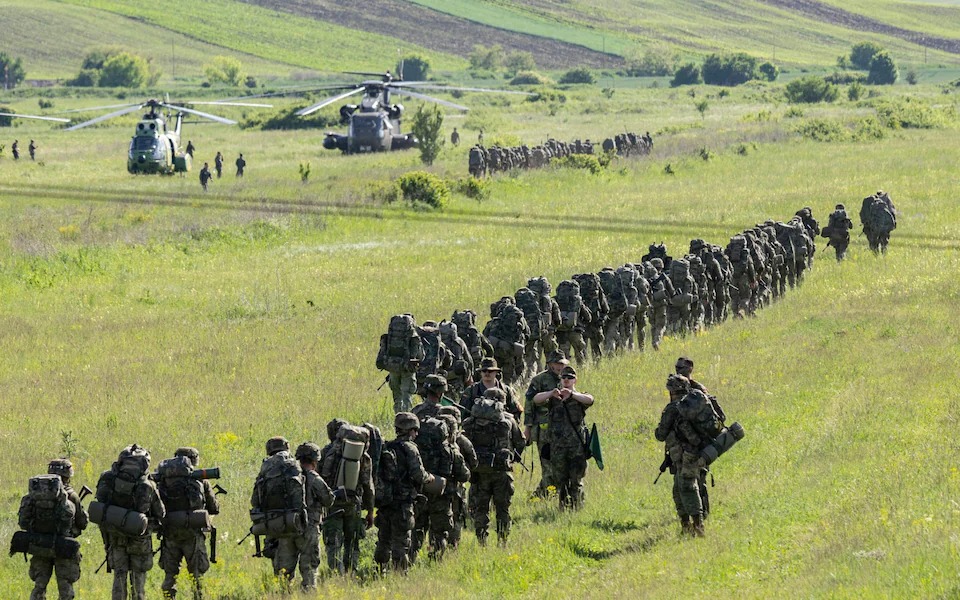EUROPE
NATO prepares ‘land corridors’ in Europe for US troops in case of war with Russia

NATO is preparing several ‘land corridors’ in Europe to move US troops and armour to the front line in the event of a major land war with Russia.
Officials told The Telegraph that American troops would land at one of five European ports and be guided along pre-planned logistical routes to counter a possible attack from Moscow.
Logistical routes have become a key priority since NATO leaders agreed at last year’s summit in Vilnius, Lithuania, to keep 300,000 troops on high alert to defend the alliance.
Under current plans, US troops would land at Dutch ports and then board trains that would take them through Germany to Poland.
The plan to land in the Netherlands was not considered adequate
In the event of a Russian invasion of NATO countries, US troops will be shipped to the port of Rotterdam before being transported east.
Behind the scenes, however, preparations are being made to extend the routes to other ports to ensure that land lines of communication are not cut by Moscow’s forces.
Ukraine is suffering a lot from these Russian long-range missile attacks on logistics systems,’ Lieutenant General Alexander Sollfrank, head of NATO’s Joint Support and Enabling Command (Jsec), told The Telegraph.
Turkey and Greece added to land corridor plan
If NATO forces entering from the Netherlands come under Russian bombardment or if northern European ports are destroyed, the alliance is preparing to focus on ports in Italy, Greece and Turkey.
From Italian ports, US troops could be moved overland through Slovenia and Croatia to Hungary, which borders Ukraine.
Similar plans exist to move forces from Turkish and Greek ports to the alliance’s eastern flank via Bulgaria and Romania.
Plans are also being drawn up to move troops through ports in the Balkans, Norway, Sweden and Finland.
In these corridors, national armies will not be constrained by local regulations and will be able to move supplies freely without the usual restrictions.
NATO has been looking for a land corridor for several years
Previously, the French government had complained that its tanks were being held up at foreign borders by bureaucracy when it tried to deploy to Romania as part of a new plan to defend against a feared Russian invasion.
Over the past five years, Jsec has carried out studies on behalf of NATO to explore various routes that could be used to deploy troops in the event of a Russian invasion.
Ports in northern Europe, such as the Netherlands, Germany and the Baltic states, are considered particularly vulnerable to Russian missile attacks.
Concern over surface-to-air capabilities
Everything is set up to have the necessary flexibility: robustness, reserves and also back-ups,” said Lieutenant General Sollfrank.
But amid warnings that NATO has only 5 per cent of the air defences it needs to protect its eastern flank, the Jsec commander is concerned about surface-to-air capabilities to defend key logistics hubs.
When we observed and assessed Russia’s war in Ukraine, we found that Russia attacked Ukraine’s logistics bases. This should lead to the conclusion that the huge logistics bases we know from Afghanistan and Iraq are no longer possible because they will be attacked and destroyed very early in the conflict,’ the commander said.
Air defence ‘has always been scarce’, the commander said, adding that he could not imagine a situation where there would be sufficient air defence.
This is a good example of a military principle: If you want to be strong everywhere, you are strong nowhere,” the NATO commander said.